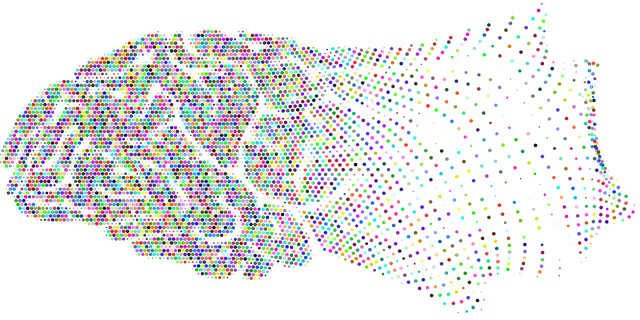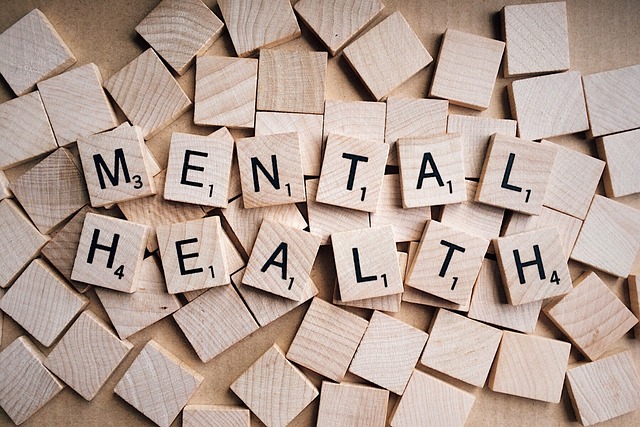Greenwood Village faces high anxiety rates across all demographics, prompting the need for tailored Greenwood Village Anxiety Therapy. Their mental health education program focuses on SMART goals, integrating risk assessments, mood management, and stigma reduction. With a robust curriculum, interactive workshops, and diverse delivery methods, they promote emotional well-being through comprehensive coping skill development. Evaluating knowledge gain and behavioral shifts, their rigorous approach ensures effective learning for enhanced community mental health and lasting positive changes.
Greenwood Village, like many communities, faces challenges related to mental health, particularly anxiety disorders. This article explores the design of an educational program aimed at addressing these issues within the local context. We begin by understanding the prevalence and unique aspects of anxiety in Greenwood Village. Next, we set clear objectives for therapy programs, design a comprehensive curriculum, and discuss delivery methods to maximize engagement. Finally, we cover evaluation strategies and support mechanisms to ensure the program’s success and longevity, focusing on effective Greenwood Village anxiety therapy.
- Understanding Mental Health Issues in Greenwood Village: A Community Overview
- Setting Objectives: Defining the Goals of Anxiety Therapy Programs
- Designing Effective Curriculum: Topics and Strategies for Education
- Implementation and Delivery Methods for Optimal Engagement
- Evaluation and Support: Measuring Success and Ensuring Continuity
Understanding Mental Health Issues in Greenwood Village: A Community Overview

Greenwood Village, a thriving community, faces unique challenges when it comes to mental health, with anxiety being a prevalent issue among its residents. The village’s diverse population includes young professionals, families, and students, each contributing to a complex social fabric. According to recent studies, Greenwood Village has a higher-than-average rate of anxiety disorders, impacting individuals across all age groups and socioeconomic backgrounds. This highlights the need for a comprehensive mental health education program tailored to the specific needs of the community.
The village’s vibrant culture and strong sense of community present an opportunity to foster open conversations about mental well-being. Public awareness campaigns can play a pivotal role in breaking down stigma, encouraging positive thinking, and promoting depression prevention strategies. By engaging residents through interactive workshops, educational seminars, and peer support groups, the goal is to create a supportive environment where individuals feel empowered to seek help for their anxiety and other mental health concerns, ultimately improving the overall well-being of Greenwood Village.
Setting Objectives: Defining the Goals of Anxiety Therapy Programs

When designing a mental health education program, particularly focusing on anxiety therapy in Greenwood Village, setting clear objectives is paramount. These goals should be specific, measurable, achievable, relevant, and time-bound (SMART). For anxiety therapy programs, objectives might include improving clients’ ability to manage and reduce anxious symptoms, fostering better coping strategies, and enhancing overall quality of life. By setting such objectives, the program can effectively guide participants from awareness to practical application of anxiety management techniques.
Incorporating a risk assessment for mental health professionals is crucial to ensure the safety and well-being of both clients and practitioners. Additionally, addressing mood management and mental illness stigma reduction efforts through education can create a supportive environment, encouraging open discussions and promoting understanding among participants. These integrated approaches not only enhance the program’s effectiveness but also contribute to the broader goal of improving mental health outcomes in Greenwood Village.
Designing Effective Curriculum: Topics and Strategies for Education

A well-designed curriculum is paramount to creating an effective mental health education program. At Greenwood Village Anxiety Therapy, we focus on comprehensive topics that cater to both personal growth and professional development. The core syllabus should include modules on emotional well-being promotion techniques, fostering resilience, and teaching coping skills tailored for various demographics. Interactive workshops, case studies, and group discussions can significantly enhance learning outcomes, encouraging active participation and critical thinking.
Moreover, incorporating strategies for risk management planning is vital for preparing mental health professionals. This includes teaching them to identify potential risks, develop interventions, and implement effective de-escalation techniques. By balancing theoretical knowledge with practical application, the program ensures that participants not only understand various mental health issues but also feel equipped to handle challenging situations ethically and competently.
Implementation and Delivery Methods for Optimal Engagement

Implementing a mental health education program requires strategic planning to ensure maximum engagement and impact. At Greenwood Village Anxiety Therapy, we believe that delivery methods should be diverse and accessible to cater to different learning styles and preferences. This could include interactive workshops, group discussions, and even digital platforms like a Mental Wellness Podcast Series Production. Engaging through various channels encourages participation and knowledge retention.
Effective communication strategies are key to successful program design. Utilizing simple language, real-life examples, and personal anecdotes can make complex mental health topics more relatable. Additionally, incorporating self-care practices within the curriculum teaches individuals how to manage their own wellness. By combining these approaches, we foster a supportive environment where learners feel empowered to take charge of their mental well-being.
Evaluation and Support: Measuring Success and Ensuring Continuity

Effective mental health education programs rely heavily on robust evaluation methods to measure their success and impact. This process involves assessing both the knowledge acquired by participants and the positive changes in their behaviors and attitudes regarding mental wellness. At Greenwood Village Anxiety Therapy, we understand the importance of tailored support strategies. Therefore, our programs incorporate various assessment tools, pre- and post-tests, and follow-up sessions to track individual progress. By evaluating these aspects, we can ensure that the education is relevant, engaging, and truly beneficial for those seeking improved emotional regulation and anxiety relief.
Moreover, ensuring continuity in mental health education is paramount. This involves providing ongoing resources, support groups, and access to healthcare professionals who can implement burnout prevention strategies for healthcare providers. By fostering a community of learning and care, we aim to create lasting positive changes, empowering individuals to manage their mental health effectively in the long term.
The implementation of a comprehensive mental health education program in Greenwood Village can significantly impact community well-being, particularly regarding anxiety therapy. By combining community insights from “Understanding Mental Health Issues in Greenwood Village” with evidence-based strategies, the designed curriculum addresses key objectives. Through innovative delivery methods, as discussed in “Implementation and Delivery Methods for Optimal Engagement,” this program aims to enhance mental resilience. Continuous evaluation, as outlined in “Evaluation and Support,” ensures its effectiveness in managing and reducing anxiety within the community. Adopting these practices can lead to a healthier, more supportive Greenwood Village, where residents have access to essential tools for navigating mental health challenges.














